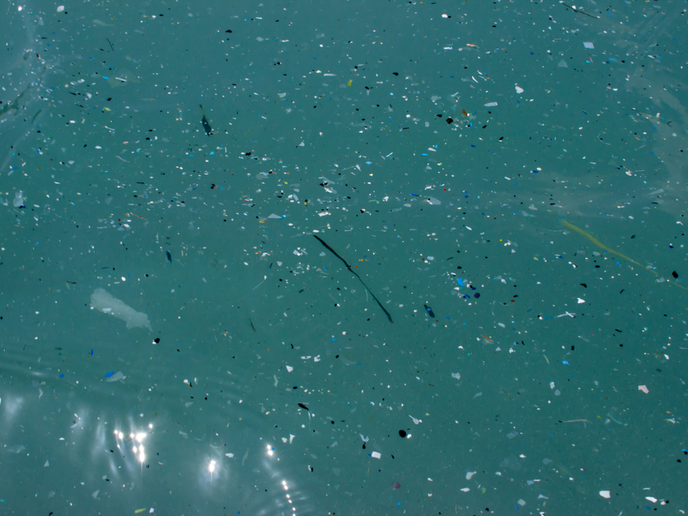Innovative light-induced chemical pathway to clean wastewater plants
Plastic pollution is a growing threat to marine ecosystems worldwide. In particular, microplastics – referring to all plastic material typically smaller than 5 mm – are a growing cause for concern. According to a United Nations news item, there are as many as 51 trillion microplastic particles in the seas, 500 times more than stars in our galaxy. Directly released into the environment through various channels such as washing of synthetic clothes, abrasion of tyres and personal care products, or originating from degradation of larger plastic objects like plastic bags and bottles, microplastics could be ingested by marine animals. They can then end up in humans through the food chain. Wastewater treatment plants are seen as a major potential source of microplastics pollution in aquatic systems, so their degradation into harmless elements is crucial. Supported by the EU-funded CLAIM project, researchers have proposed a new methodology that uses nanocoating and light energy for microplastics degradation. Their findings were published in the journal ‘Environmental Chemistry Letters’. The researchers highlight microplastics’ “ubiquitous distribution, uncontrolled environmental occurrences, small sizes and long lifetimes.” They add: “Actual remediation methods include filtration, incineration and advanced oxidation processes such as ozonation, but those methods require high energy or generate unwanted by-products. Here we tested the degradation of fragmented, low-density polyethylene (LDPE) microplastic residues, by visible light-induced heterogeneous photocatalysis activated by zinc oxide nanorods.” Clean technology Quoted in a press release, Prof. Joydeep Dutta from the KTH Royal Institute of Technology says: “Our study demonstrates rather positive results towards the effectiveness of breaking low-density polyethylene, with the help of our nanocoating under artificial sunlight. In practice this means that once the coating is applied, microplastics will be degraded solely through the help of sunlight. The results provide new insights into the use of a clean technology for addressing the global microplastic pollution with reduced by-products.” The research reflects the vision of CLAIM to “target the prevention and in-situ management of both visible and invisible marine litter, through the development of both new technologies and redefined methodological approaches to innovate the ways in which we clean our seas,” as explained on the project website. “The project will power 5 innovative marine cleaning technologies, will prevent litter from entering the sea at two main source points: wastewater treatment plants and river mouths. Right after an effective pre-filtering system has sorted and collected litter, a photocatalytic nanocoating device will degrade microplastics in wastewater treatment plants.” The ongoing CLAIM (Cleaning Litter by developing and Applying Innovative Methods in European seas) project “will develop innovative modeling tools to assess and create informative maps about visible and invisible marine plastic pollution at basin and regional scales,” the project website adds. As part of its objectives, it also aims “to encourage the uptake and upscaling of innovative marine litter reduction technologies.” For more information, please see: CLAIM project website
Countries
Greece



